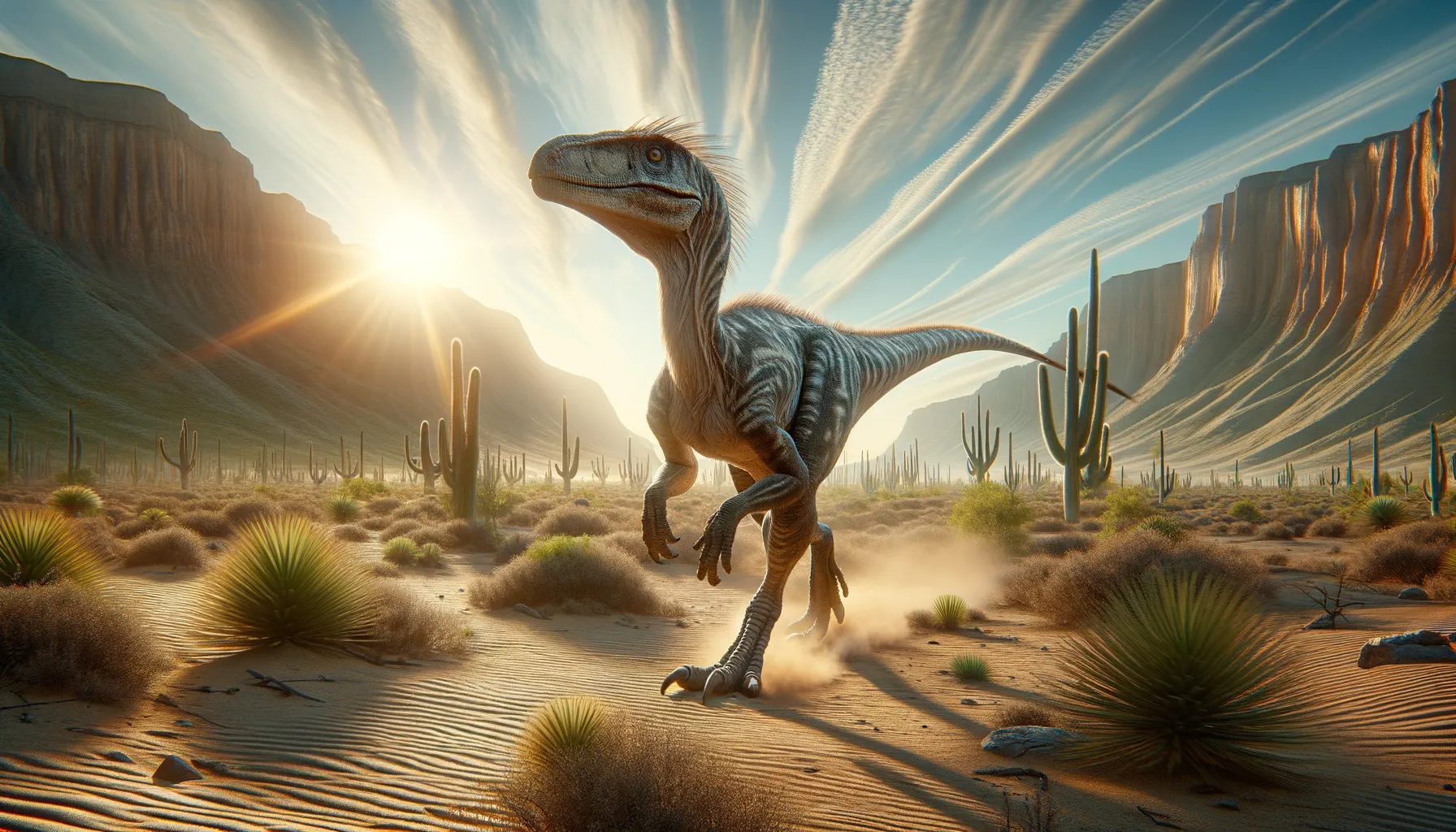
Sinornithomimus
Speedy survivor of the prehistoric plains!
Period
Cretaceous
Length
Measured about 10 to 12 feet long.
Height
Stood about 5 feet tall at the hip.
Weight
Approximately 220 pounds.
Sinornithomimus was a swift, bird-like dinosaur that roamed the Earth during the late Cretaceous period. Known for its agility and relatively light build, it was a herbivore or possibly an omnivore, grazing on plants and possibly small animals. Discovered in the Gobi Desert, it provides valuable insights into the ecosystem of its time and the evolutionary progression of theropod dinosaurs.
Diet
Sinornithomimus primarily fed on plants, suggesting a herbivorous diet. However, given its environment, it might have also consumed small animals or insects, making it opportunistic. Its diet likely varied depending on the availability of food sources.
Hunting
Though not a predator, Sinornithomimus may have foraged for food in groups to stay safe. It might have used its agility and speed to collect food quickly, avoiding confrontation with predators.
Environmental challenges
Sinornithomimus faced harsh conditions in the Cretaceous, including climate changes and competition for food. The desert where it was found indicates it may have dealt with dry climates and scarce water sources. Such challenges would have required Sinornithomimus to adapt by migrating or changing its dietary habits.
Speed
Capable of running swiftly to escape predators.
Lifespan
Estimated to live about 20-30 years in the wild.
First discovery
Discovered in the Gobi Desert in 1997 in Inner Mongolia.
Fun Facts
- Sinornithomimus lived during the late Cretaceous period, about 92 million years ago.
- This dinosaur was similar to modern ostriches, both in appearance and behavior, as it was a fast runner with long legs.
- Sinornithomimus is known for its bird-like features, including a beak and light, hollow bones.
- It was a herbivore, feeding mainly on plants and possibly small insects.
- Fossils of Sinornithomimus have been found in what is now China, giving us insight into its habitat during the Cretaceous.
- A unique find of this dinosaur is the discovery of numerous skeletons together, suggesting they lived and possibly traveled in groups.
- Sinornithomimus had no teeth, and likely used its beak to crop vegetation efficiently.
Growth and Development
Young Sinornithomimus likely grew rapidly to reach a size where they were less vulnerable to predators. They may have remained with their family groups during growth for protection. Its development stages could have been marked by increasing speed and agility.
Habitat
This dinosaur lived in what is now known as Asia, specifically in the arid regions of the Gobi Desert. Its habitat likely consisted of open fields with sparse vegetation. Its environment necessitated adaptability to changing resources and potential predators.
Interaction with other species
Sinornithomimus may have coexisted with other herbivores, sharing resources peacefully. It likely had to be cautious of larger predators. Its ability to run quickly would have been advantageous for avoiding confrontations.
Natural lifespan
It lived up to approximately 20-30 years.
Reproduction
Sinornithomimus reproduced by laying eggs, like modern birds. It might have nested in colonies, where adults protected the eggs from predators. Fossils suggest groups of juveniles may have stayed together after hatching.
Social behaviour
Sinornithomimus likely lived in herds for safety and resource-sharing. Such social structures could have helped in locating food and protecting the young. Communication and cooperation might have been essential for group survival.
Fossil locations
The primary fossils of Sinornithomimus have been located in the Gobi Desert, Inner Mongolia, China. These findings have provided insights into its behavior and environment. The discovery site is rich in fossils, offering a glimpse into the diverse life that existed during the late Cretaceous.
